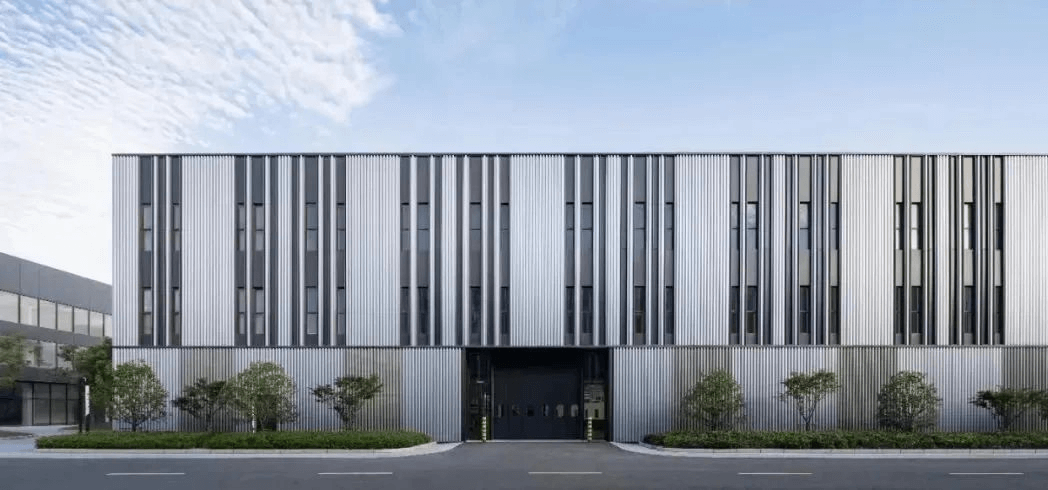+86 177 5193 6871
222, Block B, Diamond International, Guozhuang Road, Xuzhou, Jiangsu, China
With the evolution and development of urban industries, factory buildings have transformed from mere production spaces into integral components of the urban landscape. When designing factory facades, it is essential to consider not only practicality and functionality but also to incorporate industrial aesthetics that showcase unique charm.

Design Technique 1: Material Selection and Texture Expression
Material selection is critical in factory facade design. Designers can opt for industrial materials such as steel and concrete to highlight the building’s industrial character. By processing these materials thoughtfully, various textures—such as rough, smooth, and metallic—can be created, enhancing the facade’s depth and visual impact. Traditional materials like steel and concrete can convey an industrial atmosphere, but innovative applications of other materials like glass, metal, and stone can further enrich the facade’s visual appeal. By skillfully manipulating these materials, designers can achieve artistic textures that enhance the overall aesthetic.

Design Technique 2: Innovative Shapes and Line Design
Factory facade design can capture attention through innovative shapes and line work. Designers can utilize simple yet dynamic lines to create smooth curves or rigid straight lines, emphasizing the building’s outline and structure. Geometric forms such as cantilevers, inclines, and staggered arrangements can increase the building’s dimensionality and artistic quality, making the facade more lively and engaging. Unique exterior forms can be achieved through irregular geometric shapes or staggered facade designs, which enhance visual impact and artistic expression.

Design Technique 3: Utilization of Light and Shadow Effects
Light and shadow are essential elements in factory facade design. Designers can leverage the facade’s three-dimensionality and texture to produce a rich variety of light and shadow effects under different lighting conditions. By strategically placing windows, protrusions, or external decorations, varied landscapes can be presented both day and night, enhancing the building’s visual appeal.

Pursuit of Aesthetic Value
The design of factory facades must prioritize not only practicality but also the pursuit of aesthetic value. By innovatively merging industrial elements with modern aesthetics, designers can create distinctive and eye-catching architectural identities. The use of color is also a vital method in achieving aesthetic appeal. Designers can employ bold colors to highlight the building’s features or softer tones to foster a warm atmosphere. Color choices should consider harmony with the surrounding environment while aligning with the building’s function and style.

In conclusion, factory facade design should balance practicality with innovation and aesthetic appeal. Through thoughtful material selection and texture expression, the use of lines and geometric forms, and strategic color application, unique and artistically rich factory facades can be created. Such designs not only elevate the building’s image and sophistication but also contribute a distinctive industrial artistic landscape to the city.
